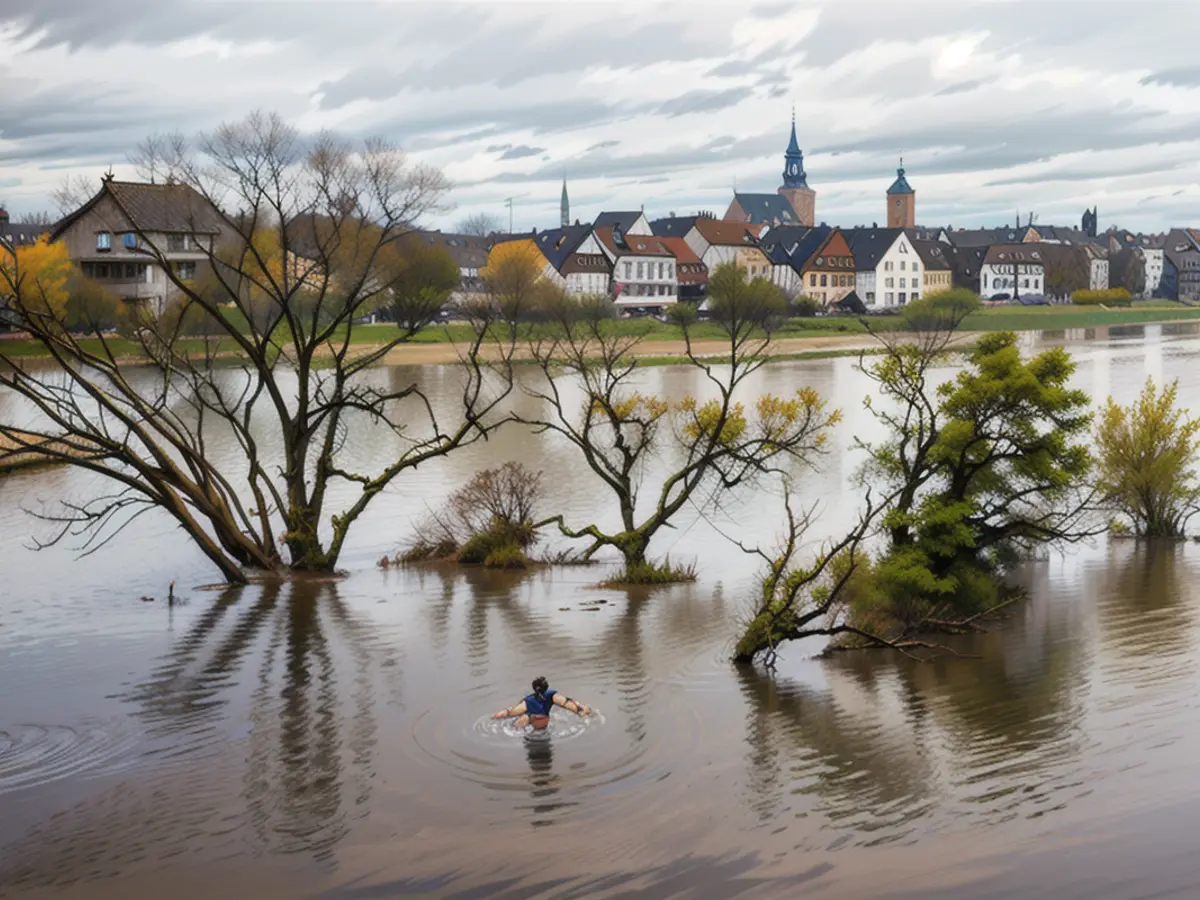Environmental changes: Weather patterns and temperatures altering. - Saxony-Lower enhances flood defenses.
The government in Lower Saxony intends to increase flood prevention measures after a large portion of the state was inundated at the beginning of the year. "The climate crisis doesn't delay," expressed Environmental Minister, Christian Meyer (Greens), in Hanover on Monday, while referring to the lengthy approval processes, like those involved in coastal protection. "And we need more personnel." The Niedersachsen State Agency for Water Management, Coastal Protection, and Nature Conservation (NLWKN) will receive an additional 400 permanent positions, with a focus on coastal and flood protection. This is an increase from the previous limit of 200 positions.
In the so-called 'Christmas flood' of late 2023, the dikes in Lower Saxony and Bremen managed to hold - thanks to around 120,000 volunteers. Although severe flooding was averted, damage of several million euros was caused in Lower Saxony alone, according to the Environment Ministry.
"We now have an average temperature increase of 1.7 degrees in Lower Saxony," said Meyer. "We know that we will experience droughts in the summer." There are also more heavy rain events that can occur in any area of the country. "We will have to prepare our municipalities for this altered disaster situation," expressed the minister. One of the strategies for this is promoting regional flood partnerships. Oldenburg's Mayor, Jürgen Krogmann (SPD), has also called for a roundtable meeting for the region around the rivers Hunte and Haaren after the floods over the Christmas holiday, given that the problem cannot be solved on a district level alone.
The current construction and financing program of the state allocates 43 million euros for over 100 flood prevention projects, led by associations, municipalities, and the state. Key focus areas include traditional dike construction and the fortification of dikes with individual projects in the districts of Lüchow-Dannenberg, Lüneburg, Friesland, and Wittmund. Funds are also allocated for flood retention basins and pumping stations.
The red-green state government's initiatives are insufficient, according to CDU state legislator Verena Kämmerling on Monday. "In addition to long-term investments in flood prevention, we need an action plan that outlines and enacts the adaptation of flood protection facilities in response to climate change." At least 60 million euros per year would be required for such a plan. "The safety and protection of the population must take precedence over nature preservation and other competing interests." It was still unclear on Monday how much money Meyer would propose in his budget for 2025 for flood protection in the summer.
Anne Rickmeyer, the director of NLWKN, reported that after the "Christmas flood," several precautionary measures were implemented, such as updating alarm plans. She indicated the hazard maps used by citizens to understand different flood scenarios.
Minister Meyer stated that not every location is suitable for fixed dikes. During the "Christmas flood," mobile dikes proved useful. For the first time, the Interior Ministry gave 14 million euros to the municipalities for mobile dikes and sandbag filling machines for the purpose of disaster management. These are now stored at various locations and available to the municipalities in case of a flood event - just like the sandbag reserve.
As per the Paris climate agreement, the world should strive to limit Earth's warming to less than two degrees Celsius compared to pre-industrial levels, ideally 1.5 degrees. Even with a temperature increase of about one degree Celsius compared to pre-industrial times, there are more extreme weather events, rising sea levels, shrinking Arctic ice, and other changes, according to the World Climate Council.
Read also:
- Tough return to normality in snow and ice
- Fewer unauthorized entries: Domino effect through controls
- Trial against BND employee from mid-December
- Xhaka leads Leverkusen to triumph in cup tournament, scoring two goals.
The state government of Lower Saxony, located in Germany, is enhancing its flood defenses after significant flooding at the start of the year. Environmental Minister Christian Meyer, from Lower Saxony, mentioned the urgent need for more personnel and faster approval processes for flood prevention measures, particularly coastal protection. The Niedersachsen State Agency for Water Management, Coastal Protection, and Nature Conservation (NLWKN) will receive an increased number of permanent positions, specifically focused on coastal and flood protection.
The so-called 'Christmas flood' of late 2023 saw dikes in Lower Saxony and Bremen withstand severe flooding, thanks to the efforts of around 120,000 volunteers. Despite avoiding severe flooding, damage amounting to several million euros was reported in Lower Saxony alone.
Minister Meyer highlighted the average temperature increase of 1.7 degrees in Lower Saxony, warning of future droughts and heavy rain events. Adopting regional flood partnerships, such as the one proposed by Oldenburg's Mayor Jürgen Krogmann, is a key strategy for preparing municipalities for this altered disaster situation.
The current funding program allocates 43 million euros towards over 100 flood prevention projects. Key focus areas include traditional dike construction and fortification in districts like Lüchow-Dannenberg and Friesland, as well as the installation of flood retention basins and pumping stations.
Critics like CDU state legislator Verena Kämmerling argue that the red-green state government's initiatives are insufficient and call for long-term investments and an action plan for climate-change-adapted flood protection facilities. This would require at least 60 million euros per year.
Following the 'Christmas flood,' measures such as updating alarm plans and utilizing hazard maps were implemented by Anne Rickmeyer, the director of NLWKN, to assist citizens in understanding different flood scenarios.
According to the Paris climate agreement, the world should strive to limit earth's warming to less than two degrees Celsius compared to pre-industrial levels, with a goal of 1.5 degrees. Regardless of a temperature increase of around one degree Celsius compared to pre-industrial times, extreme weather events, rising sea levels, shrinking Arctic ice, and other climate changes are evident, as reported by the World Climate Council.
Source: www.stern.de








